Intertidal zones are defining facets of marine ecosystems. Simply put, they’re those parts of marine ecosystems where oceans besiege land.
On the surface, the intertidal zone is pretty basic. It’s just the interface of water and land, after all. Yet, the intertidal zone is unique. Unlike forests or deserts, these zones aren’t static habitats. They aren’t grandiose and large landscapes that stand the test of time. Rather, they’re strips of land that change with time.
We’re not even talking about time and change as a matter of months or days here; intertidal zones are incredibly dynamic habitats. Within these zones, change can occur in seconds.
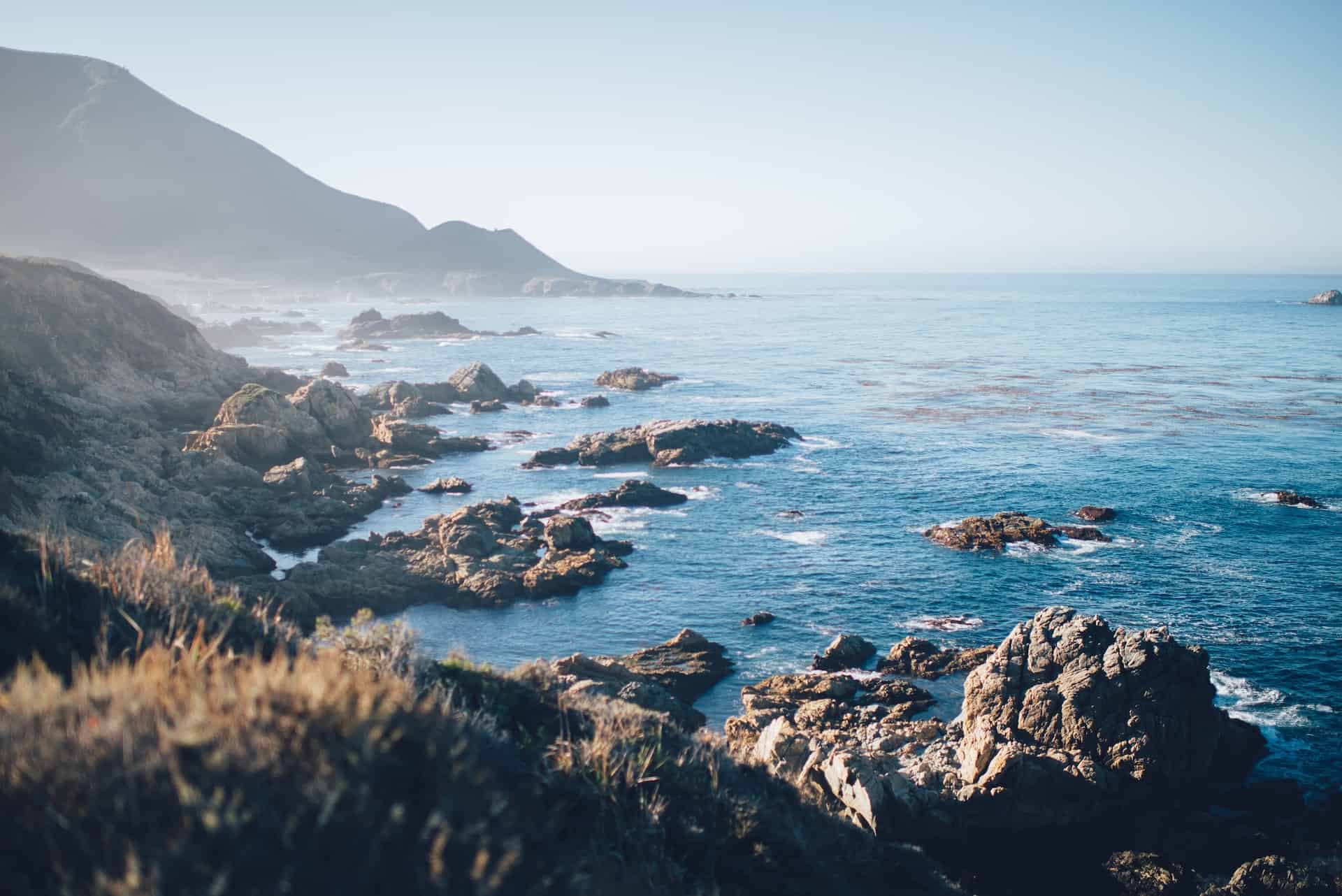
Life in the intertidal zone is hard but by no means scant. From arthropods like crabs (and surprisingly enough — spiders!) to vertebrates like fish and eels — the intertidal zone houses an insane amount of biodiversity.
What is the Intertidal Zone?
Ever been on a beach and noticed that there’s a lot of wet sand? Not just where the waves crash against the shore but also extending several meters beyond. The wet part of the shore, coupled with the actual “beach” area (where water splashes land) is the actual intertidal zone.
This is because intertidal zones (also known as littoral zones) are very literally defined by the difference in tides — specifically high and low tides. At high tide, water makes its way high up the shore. Later in the (lunar) day, in twelve hours or so, low tide strikes. At this point, water recedes to its lowest point on the shore.
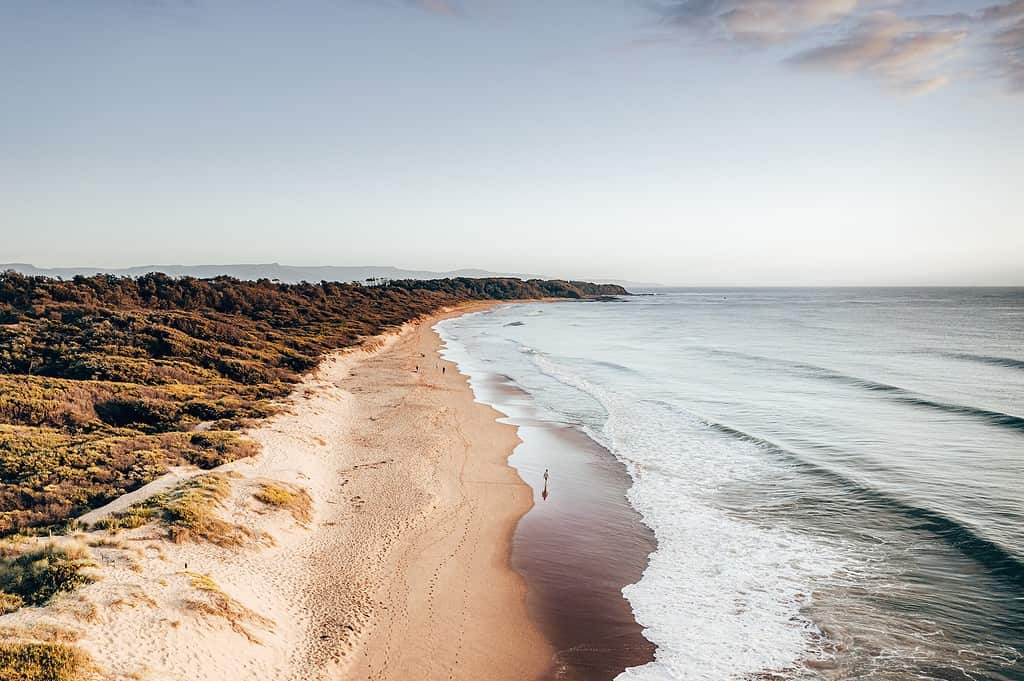
Solar days run for 24 hours whereas lunar days last for 24 hours and 50 minutes. This is because both the earth and the moon revolve in the same direction — this means that the Earth literally chases the moon!
The different zones of an intertidal ecosystem
Spray zone
The spray zone is the intertidal zone’s equivalent of a participation certificate. This zone is never actually submerged underwater except in the wake of crazy high tides. These crazy high tides are called “King Tides“. Sounds neat, eh?
The spray zone doesn’t have a ton of life but it isn’t necessarily bare either. This part of the intertidal zone houses tons of algae and fungi. Algal species like sea palms dominate large parts of the spray zone and provide much-needed sources of food to small critters like limpets and chiton. So, although the spray zone isn’t exactly bursting with biodiversity, this doesn’t necessarily mean the zone is lifeless either.
High Intertidal zone
It’s the farthest section of an intertidal zone that regularly interacts with water. When scouring this zone, you can expect to find immobile colonies of barnacles. If sessile animals bore you; think again — in water, barnacles move!

If you ever find yourself hanging out in these parts of the shore, take a moment and watch as the high tide goes out and the waters recede. Barnacles are shelled invertebrates — they don’t have a backbone. To the outside world (read: ignorant humans) barnacles just look like rocks however within that outer rock-like shell there is actually a soft-bodied animal. When submerged under water, a part of that soft body opens up.
Leg-like appendages squeeze through a door-like opening of their shell and squirm around — looking for plankton to feed on. However, as soon as the water recedes, watch as they snatch back their squirmy legs to fit inside the shell and snap shut.
Middle Intertidal Zone
Smack-dab in the middle between the lowest and highest points of the littoral zone, the changes in this zone are in sync with the daily fluctuations of the tide. This means that most days, water flows over — and subsequently recedes from — this zone twice a day.
Unlike the spray and high intertidal zones, water doesn’t just pound against this section. This zone is submerged for a considerable time of the day. This means that the flora and fauna in this zone need to be both sessile and flexible. For instance, let’s take a look at sea anemones.
Often mistaken for plants, sea anemones are a type of cnidarian — a group of soft-bodied invertebrates that includes anemones and jellyfish. Sea anemones are sessile (unlike their immortal cousins). This means they stay in place. Yet, unlike barnacles, these creatures aren’t fixed in place. Anemones can hop around and “swim” or move away from predators if required. Their alien-like bodies are incredibly soft to the touch. This lets them dance to the ebbs and flows of the water around them.
In times of low tide, sea anemones become land anemones. With no water around them, they run the risk of desiccating — they lose water and dry out. To prevent desiccation, sea anemones make themselves smaller. They close in on themselves and hunker down — allowing sand and other beach sediment to collect over themselves. This may not sound like a big deal but trust me, for soft-bodied organisms, losing water is a matter of life or death.
As pretty as sea anemones look, do not touch them. Some sea anemones have stinging cells on the surface of their arm-like tentacles. Depending on the species, these cells are armed with varying amounts of toxin. Although not all sea anemones possess enough toxins to pack a punch — it’s just good practice not to touch potentially toxic things.
Low Intertidal zone
It’s always popping in the lower intertidal zone. The greatest amount of biodiversity — both flora and fauna — lives here. The constant presence of water in this zone makes life a little easier. Akin to a barrier, the water here offers the highest degree of protection to its residents. From fauna like crabs, shrimp, and fish to seaweeds and sea lettuce — life’s (relatively) easy in this tidal zone.
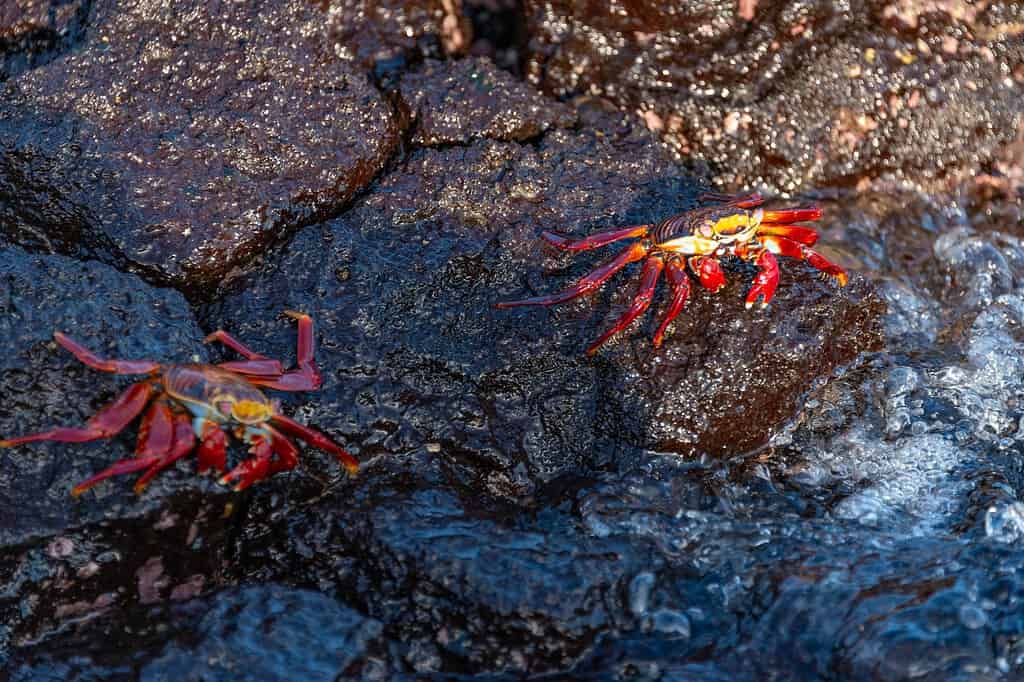
Where are intertidal zones found?
Like Hannah Montana, intertidal zones are the best of both worlds. Spatially and temporally (nerd speak for space and time), these zones make up some of the most diverse ecosystems in the world.
Think about it: the constant changes in tide make these zones ridiculously dynamic. However, because these zones occur wherever sea water meets land we can find them on every single coast in the world!
These zones aren’t just limited to pristine Instagram-worthy sandy beaches either. They can be found in any coastal ecosystem. Generally, depending on the topography of the coast, intertidal ecosystems can be classified as either sandy zones or rocky zones. In rocky zones, instead of water splashing against the slopes of sandy dunes; waves crash against the jagged edges of exposed and steep rocks.
Inhabitants of the intertidal zone
Ever wonder about the kind of insane plants and animals that live in the fluid intertidal zone? Well, buckle up and join us as we dive — or rather, wade through the waters of the intertidal zone.
Fauna of the intertidal zone
Picture, for a second, that you’re a cute little snail living on a rock bed. Depending on the moon (and to some extent, the sun); your home can shift from exposed dry land to a sudden deluge of saltwater! This is the reality of animals living in the intertidal zone. This whip-lash reality is just regular programming for a select few animals in the world — the formidably resilient denizens of intertidal zones.
Moray Eel
Unlike electric eels, Moray eels don’t generate electricity. However, they do still generate tons of another substance: mucus. Mucus-covered bodies aside, Morays do look a tad bit scary (unsightly even). Yet, there’s a lot to like about these creatures.
For instance, despite being fish (yes, they’re fish — not snakes!) Morays have just one fin: their dorsal fin. They’re also scaleless — another fishy anomaly. The lack of scales and fins isn’t the Moray’s defining feature. Nor are their slime-covered bodies. Rather, it’s their jaws — and we’re not talking about the ones in their mouths.
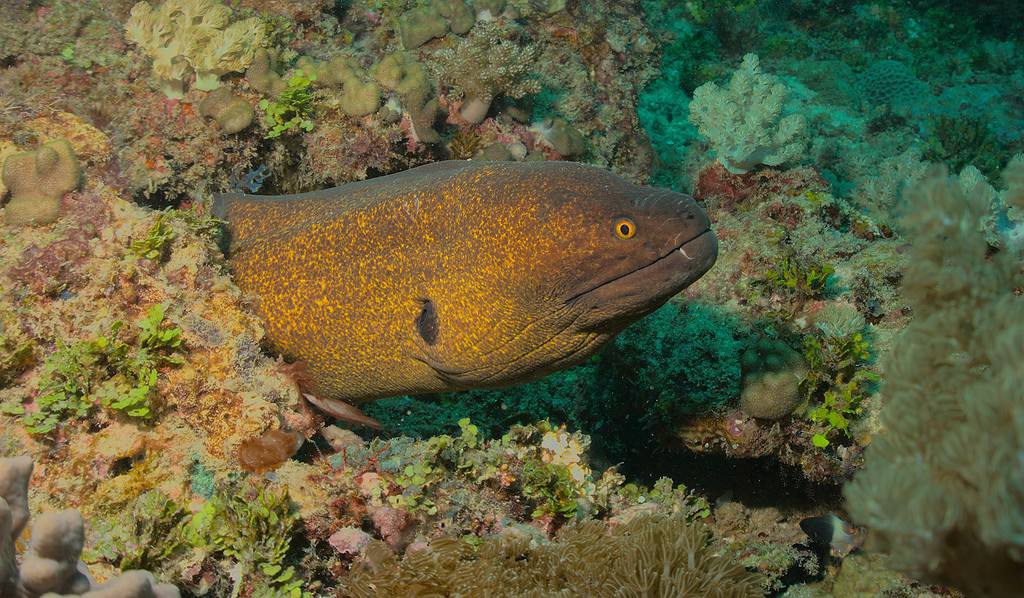
These incredible predators have a second set of jaws in their throats. Once these eels catch hold of prey in their mouths, they don’t just swallow them. That’s basic. Instead, the second set of jaws jump from the throat into the mouth, where they grab onto the prey and drag it down to their esophagus (the food pipe). All this action — from catching the prey to the second set of jaws yanking it down to the food pipe — happens in a matter of seconds!
Sea Star
Sea stars are some of the most popular animals in the world. SpongeBob fans might rejoice. After all, who is the best friend of the sea sponge that lives in a pineapple under the sea? Patrick (the seastar). Unlike Patrick, not all Sea stars are loyal and goofy sidekicks. One of the most feared predators of the intertidal zone, sea stars have a pretty cool (and unsettling ) way of hunting prey.
Sea stars have small mouths so instead of limiting themselves to small prey, they throw their stomachs out instead (yes, you read that right). Once a Sea star zeroes in on a tasty meal, the hundreds of tiny tube feet on all their arms all scuttle toward the prey until it’s safely tucked under their body. Then, from their mouth emerges their stomach. The stomach envelops the prey and digests it outside the body — making it small enough to fit through the mouth.
Spiders
Along the coasts of Oceania, it isn’t just fish and kelp that live under the sea. Multiple species of spiders like the Bob Marley’s spider live in the low intertidal zones of coastal ecosystems across Western Australia and Samoa. Discovered in 2017 for the first time, these spiders live in corals like the brain coral. Here, they weave “air chambers” which they use to hide in when submerged underwater.
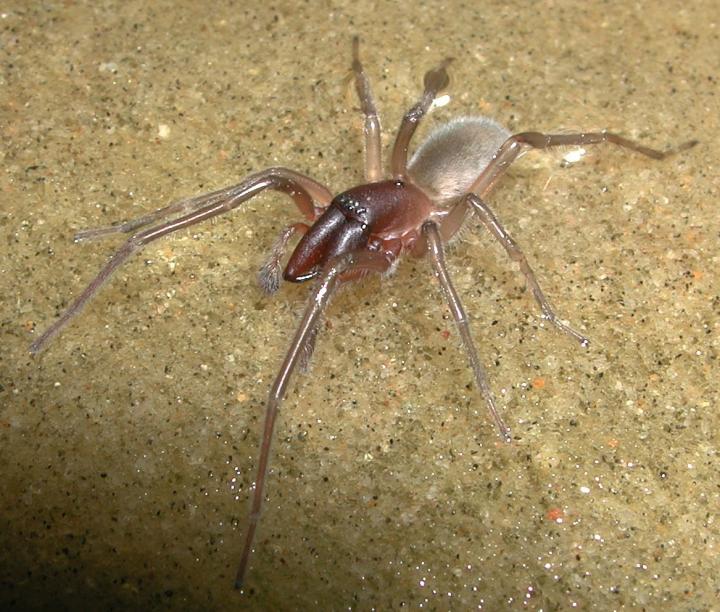
According to Drs. Barbara Baehr, Robert Raven, and Danilo Harms, the researchers who first described the species, the arachnid’s name is an ode to Marley’s song “High Tide or Low Tide.
“The song ‘High Tide or Low Tide’ promotes love and friendship through all struggles of life…it is his music that aided a field trip to Port Douglas in coastal Queensland, Australia, to collect spiders with a highly unique biology,” explained the authors in a press release.
Flora of the intertidal zone
Flora begets fauna (it is the reason it’s flora and fauna after all) and down in the intertidal zone, the flora isn’t typical at all. The vegetation of the zone is…eccentric to say the least.
Most of the plants in this zone aren’t even plants — they’re algae. Like true plants, algae also derive energy through photosynthesis, a method plants use to make food using oxygen, water, and sunlight. However, unlike true plants, algae aren’t differentiated. For starters, they don’t follow the traditional root, stem, and leaf body patterns of their terrestrial cousins.
Dead man’s fingers
A kind of green alga, the soft and swollen green branches of the Dead man’s fingers give it an eerie vibe. This alga is an enabler: species of both flora and fauna depend on it. For instance, a particular kind of Sea slug, the Alesia, steals chloroplasts off the alga to help produce slime. Similarly, species of red alga are Dead man’s fingers “specialists”. These algae grow on bushes of the Dead man’s fingers.
The alga is particularly successful and is widely distributed all across the world however this success isn’t all that good for a few ecosystems. For instance, in many parts of Europe, Dead man’s fingers are too successful — transitioning from predominant vegetation to invasive vegetation.
Sea Lettuce
Ever wash leaves of lettuce in your sink? Well, sea lettuce looks exactly like that — except much mushier and slimier. These algae don’t have any stems. Their leaflike thalli are directly attached to a holdfast — the algal equivalent of true roots. The alga are highly adaptable and are scattered all over the intertidal zone. The algae also have a particularly interesting history: sea lettuce has the unique distinction of being one of the first algal species to ever be taxonomically described by Carl Linnaeus, the father of taxonomy!
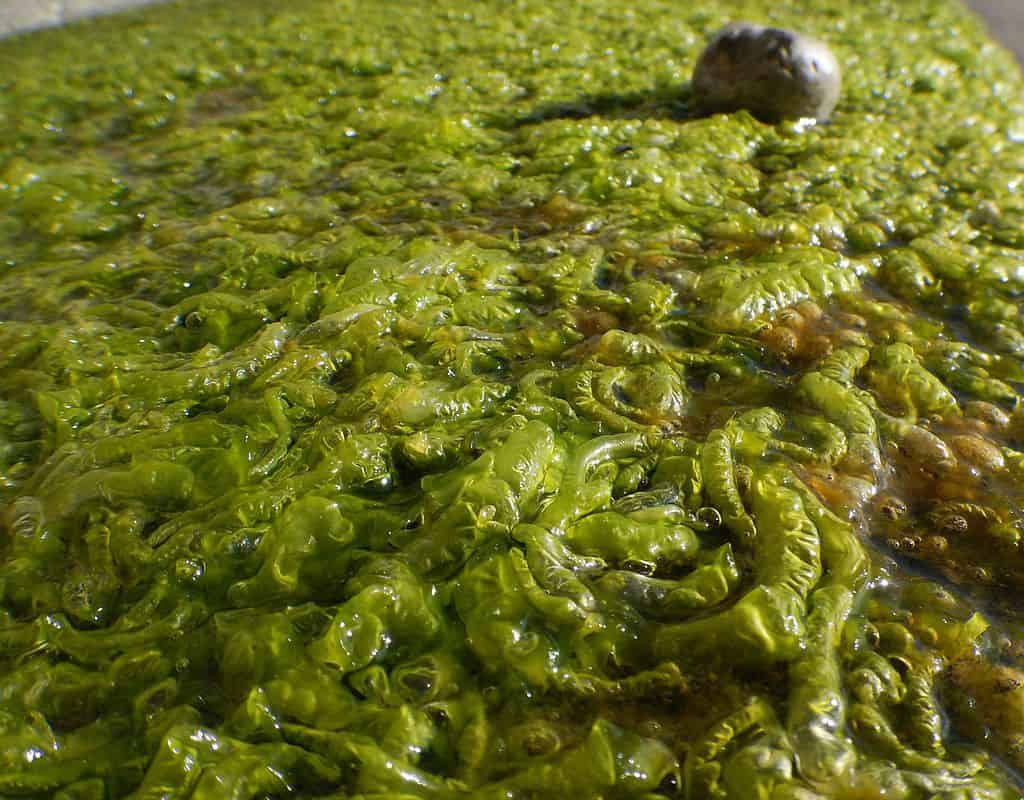
Similar to Dead Man’s fingers, even Sea lettuce can turn invasive. In favorable conditions, blooms of Sea lettuce can pop up all over the place, leeching all the dissolved oxygen out of their habitat.
Giant kelp
It’s hard to grasp just how giant these kelp are. On average, adequate given space and time, giant kelp can grow up to 100 feet (30 meters) long. That’s the snout-to-tail length of a fully-grown blue whale. They also grow at a ridiculously fast pace. In favorable conditions, a strand of kelp can grow as much as two feet (60 cm) per day.
Crazily enough, if an individual strand of kelp grows till it reaches the sea floor — it doesn’t just set up shop and anchor itself to the ground. Instead, these insane algae begin to extend horizontally!
Not all intertidal zones extend to the deep depths of 100 feet and more but most still do harbor healthy populations of Giant Kelp. Giant Kelp is a favorite amongst marine species. The kelp forms dense forests which both house and feed numerous marine animals like jellyfish, crabs, snails, prawns, and much more.
It’s not just the invertebrates that gravitate towards kelp forests. Much, much deeper in the ocean, large marine mammals like Grey Whales have also been spotted in these forests. The whales use these forests as a safe haven when hiding from predatory Killer Whales!
Threats to the intertidal zone
By nature, intertidal zones are dynamic, fluid, and ever-changing. Mix in climate change and anthropogenic pressures and suddenly intertidal zones are all those things and diminishing. To prevent losing vulnerable marine ecosystems — like intertidal zones — forever it is important to accurately map areas most prone to damage.
By identifying such areas, conservationists, land-use managers, and ecologists can all more precisely devise conservation management plans for such areas on a high-priority basis. It’s pretty much the same principle the IUCN uses to address biodiversity loss of fauna by devising conservation plans.
How much have we already lost?
In a bid to know more about the world’s intertidal zones, a study conducted in 2018, by researchers from the University of Queensland and the University of New South Wales, set out to map all the intertidal zones in the world.
In a press release, Professor Richard Fuller, a contributor to the study and a faculty of the UQ’s School of Biological Sciences, said that it was crucial to identify areas where intertidal zones are lost to threats like development and the rising sea level.
“Identifying areas where intertidal zones are being lost to development and rising seas is critical to safeguard coastal communities…Our research will have significant international benefits, with more than 1.4 billion people expected to live in coastal areas by 2060,” opined Professor Fuller.
This study was no mean feat. To investigate the loss of intertidal zones and identify exactly the degraded areas, the team used machine learning to analyze more than 700,000 satellite images of marine habitats collected over 30 years.
Researcher Dr. Nick Murray explained the painstakingly detailed and time-consuming methodology used in the study.
“We applied machine learning classifiers to every pixel from each satellite image available to us from along the world’s coastlines,” explained Murray. That’s right, researchers analyzed every single pixel from 700,00 plus satellite images. This study was the first to ever attempt such a feat.
The study revealed that between 1986 and 2016, the world lost around 16 percent of its intertidal zones.
Conclusion
Where salty waters interact with land; that sweet spot of land is the intertidal zone. To us, the intertidal zone might just be that part of the beach we like to visit and enjoy. But for a surprisingly large number of species — this zone is their home. So the next time you visit a beach or a cliff next to the sea, take a moment, have a look around, and try your hand at tide pooling — you might just be surprised by the sheer volume of life you find around you.


